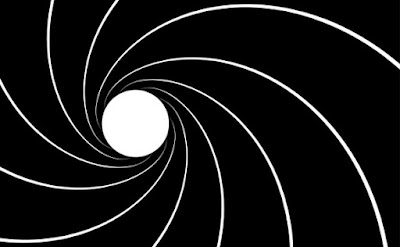From Dr. No up until On Her
Majesty’s Secret Service, the James Bond films existed in the same universe and
there was somewhat of an attempt to keep a loose continuity (no so much as
actors like Blofeld and Felix Lieter, who generally changed from film to film).
But after Sean Connery returned for one more Bond film, Diamonds Are Forever, you
sense that film and the ones that would come after existed in a completely different
universe. Also gone, due to various legal issues that haunted the franchise for
decades (which also includes studio bankruptcy and what not), the Bond films
became almost stand-alone, with very little connection to previous adventures
or ones that would come after. Only one time after On Her Majesty’s Secret
Service (perhaps the best Bond film of the 1960s era), was there a direct reference
to Bond’s wife Tracy –that being the sort of comic pre-credit opening to For
Your Eyes Only.
Then, I believe, on one occasion,
in Licensed to Kill, the second Timothy Dalton Bond film was there another throwaway
line about Bond being married before. But basically from Diamonds Are Forever
through Die Another Day, these films were separate from the 1960s films.
When the franchise was
rebooted in 2006, there was a planned attempt to bring back some of the continuity
of the Connery era, but the long gestating legal issues with characters, plots,
and organizational names, was still going on. So Producers Barbara Broccolli
and Michael G. Wilson had to do a few work a rounds that hinted they wanted to bring
back Blofeld, SMERSH and SPECTRE, but licensing issues prevented them, so the
idea of Quantum was created.
Then in 2013, the legal battle
between all parties (most who were now dead) was settled and with the acquisition
rights to SPECTRE and its associated characters were folded into future films
and there was a minor retcon to the films continuity, especially with the three
previous films, were the Quantum organization that was alluded to in Casino
Royale and fully introduced in Quantum of Solace, being now reimagined as division
within the Spectre organization rather than any type independent outliers. It’s
also implied in the film Spectre, they are no longer active. Furthermore, the
writers and producers also tied the events of Skyfall to Craig's first two Bond
films by revealing Raoul Silva was also associated with Spectre, making Skyfall
less of a solo story now.
Whatever happens when Bond
returns to the screen, I hope there is some attempt to keep continuity. Not
saying they don’t have to continuations, that I’m fine with standalone films,
but we do need to prevent things like Bond being tagged with a tracker three
times (Licensed to Kill, Casino Royale, and Spectre) so MI6 can keep an eye on
him.
It would also be nice to see Blofled return along with Spectre in some ways. While the idea that Russian run SMERSH is great as well, I don’t see that organization being run by the Soviets in the 21st Century.



